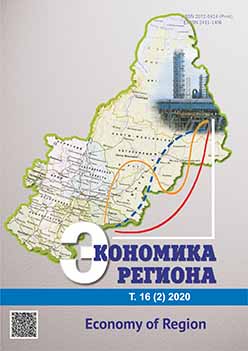ЕВРАЗИЙСКИЙ ЭКОНОМИЧЕСКИЙ СОЮЗ: ОСНОВНЫЕ ТРЕНДЫ РАЗВИТИЯ НА ФОНЕ ГЛОБАЛЬНОЙ НЕОПРЕДЕЛЕННОСТИ
Eurasian Economic Union: Key Development Trends amid Global Uncertainty
Author(s): Ruslan Semenovich Grinberg, Artem Gennadievich PylinSubject(s): Economy
Published by: Институт экономики Уральского отделения Российской академии наук
Keywords: EAEU; EU; CIS; Russia; China; liberalization; protectionism; external shocks; sanctions; integration effects; trade in goods and services; foreign direct investment; labour migrant remittances
Summary/Abstract: Currently, the Eurasian Economic Union (EAEU) is at a critical juncture in its development. Five years after the agreement came into force, but there are still serious economic contradictions between the key participants of the Union, as the achieved integration effects are quite ambiguous. Due to unfavourable external conditions, the positive trade effects of the implementation of the EAEU have been very limited. Only Armenia, of all member countries, has benefited most. However, an increase in medium and high value-added products led to positive changes in the commodity structure of mutual trade. For assessing the degree and nature of the impact of the Russian Federation on the economies of the EAEU member countries, we identified and analysed such factors as trade in goods and services, migrant remittances and foreign direct investment from Russia in the period 2011–2018. In general, the reduced remittances from Russia and a decline in mutual trade in goods decreased the significance of the Russian factor in the development of the members of the Union. At the same time, trade in services and direct investments are more sustainable, indicating the high potential for the development of cooperation in these areas. Influenced by changing external factors, such as volatile fuel and raw materials prices, different macroeconomic and geopolitical challenges, the EAEU is unable to ensure sustainable growth in mutual trade. We have identified a variety of aspects hindering the progressive development of the Eurasian integration amid global uncertainty. They include the priority of the national economic interests of the member countries, the remaining structural economic differences, trade barriers and restrictions, the weakening of Russia as an integration driver, as well as increasing competition from the EU and China.
Journal: Экономика региона
- Issue Year: 16/2020
- Issue No: 2
- Page Range: 340-351
- Page Count: 12
- Language: Russian

